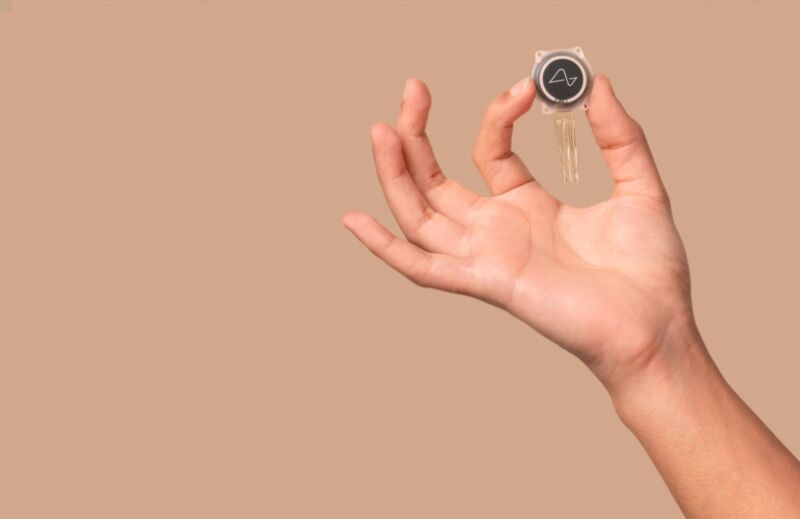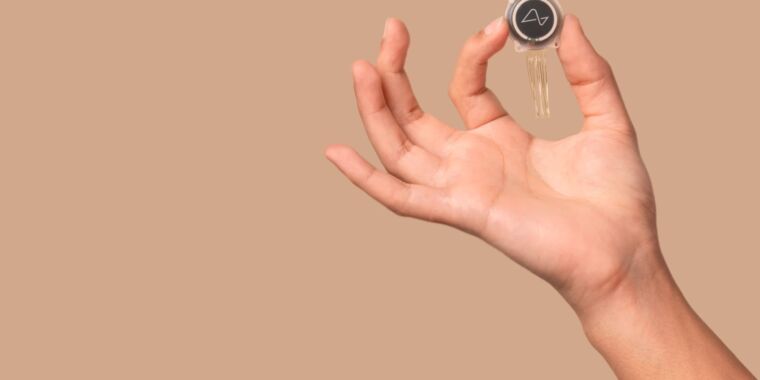
Neuralink
Only about 15 percent of the electrode-bearing threads implanted in the brain of Neuralink’s first human brain-chip patient continue to work properly, according to a report from The Wall Street Journal. The remaining 85 percent of the threads became displaced, and many of the threads that were left receiving little to no signals have been shut off.
In a May 8 blog post, Neuralink had disclosed that “a number” of the chip’s 64 thinner-than-hair threads had retracted. Each thread carries multiple electrodes, totaling 1,024 across the threads, which are surgically implanted near neurons of interest to record signals that can be decoded into intended actions.
Neuralink was quick to note that it was able to adjust the algorithm used for decoding those neuronal signals to compensate for the lost electrode data. The adjustments were effective enough to regain and then exceed performance on at least one metric—the bits-per-second (BPS) rate used to measure how quickly and accurately a patient with an implant can control a computer cursor.
In an interview with the Journal, Neuralink’s first patient, 29-year-old Noland Arbaugh, opened up about the roller-coaster experience. “I was on such a high and then to be brought down that low. It was very, very hard,” Arbaugh said. “I cried.” He initially asked if Neuralink would perform another surgery to fix or replace the implant, but the company declined, telling him it wanted to wait for more information. Arbaugh went on to say that he has since recovered from the initial disappointment and continues to have hope for the technology.
“I thought that I had just gotten to, you know, scratch the surface of this amazing technology, and then it was all going to be taken away,” he added. “But it only took me a few days to really recover from that and realize that everything I’ve done up to that point was going to benefit everyone who came after me.” He also said that “it seems like we’ve learned a lot and it seems like things are going in the right direction.”
The Journal’s report adds more detail about the thread retraction as Neuralink gears up to surgically implant its chip into a second trial participant. According to the report, the company hopes to perform the second surgery sometime in June and has gained a green light to do so from the Food and Drug Administration, which oversees clinical trials.
Neuralink, owned by controversial billionaire Elon Musk, believes it can prevent thread movement in the next patient by simply implanting the fine wires deeper into brain tissue. The company is planning on—and the FDA has reportedly signed off on—implanting the threads 8 millimeters into the brain of the second trial participant rather than the 3 mm to 5 mm depth used in Arbaugh’s implantation.
Brain-computer interface chips have been around for many years. In 2006, researchers reported the first case of a brain chip allowing a tetraplegic patient to control a “neural cursor” that could be used to open email, operate devices, and control a prosthetic hand and a robotic arm. The chip used was a Utah Array containing 96 electrodes, which can penetrate up to 1.5 mm into brain tissue.
This post was corrected to report that 85 percent, not 75 percent, of threads became displaced.

